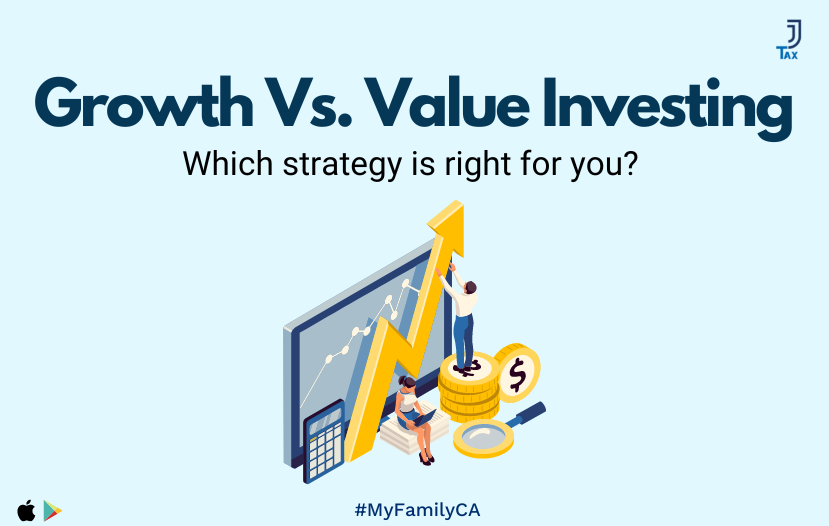Looking to invest for stable income and a lower risk? Consider value investing.
If you prefer higher potential returns and are willing to take on more risk, growth investing may be right for you. Investment strategies are not one-size-fits-all, so understanding the differences between the two approaches can help you make an informed decision.
Value investing typically involves buying undervalued stocks, often trading below their intrinsic value, with the hope of the market eventually recognizing their true worth. On the other hand, growth investing focuses on companies with strong potential for future growth, often represented by high earnings or revenue growth rates. Each strategy has its own set of risks and potential rewards. By delving into the nuances of value and growth investing, you can determine which strategy aligns with your investment goals and risk tolerance.

Credit: www.vectorvest.com
Value Investing
Value investing is a strategy where investors aim to find stocks trading at a lower price compared to their intrinsic value. It involves searching for companies whose stock prices are lower than their actual worth, as determined by fundamental analysis.
Strategy Overview
Value investing focuses on identifying undervalued stocks and holding them for the long term. The strategy involves analyzing financial statements, cash flows, and other fundamental factors to determine the true value of a company’s stock.
Pros And Cons
Let’s take a look at the advantages and disadvantages of value investing.
- Pros:
- Potential for higher returns when the market corrects undervaluation
- Emphasis on fundamental analysis reduces the impact of market fluctuations
- Long-term approach aligns with the principles of sound investing
- Cons:
- Requires patience as it may take time for the market to recognize the true value
- Lower valuation may not always lead to long-term growth potential
- Not suitable for investors seeking rapid capital appreciation
Growth Investing
Growth investing is an investment strategy focused on investing in companies that have strong potential for future growth. Rather than primarily considering the current valuation of a company, growth investors prioritize companies that are expected to experience significant increases in revenue and earnings in the future.
Strategy Overview
Growth investing involves identifying and investing in companies that are expected to grow at an above-average rate compared to other companies in the market. This strategy typically targets companies in sectors such as technology, healthcare, or consumer discretionary, where there is a higher potential for innovation and expansion.
Pros And Cons
Pros:
- Strong potential for high returns: Growth stocks have the potential to generate significant capital gains when the company performs well.
- Opportunity for innovation: Growth companies are often at the forefront of innovation, driving advancements in technology and other sectors.
- Appealing to young investors: Growth investing can be particularly attractive to younger investors with a higher risk tolerance and a longer time horizon for their investments to grow.
Cons:
- Higher volatility: Growth stocks tend to be more volatile than value stocks, meaning their prices can fluctuate significantly in the short term.
- Potentially overpriced stocks: Due to their potential for high returns, growth stocks may already be priced at a premium, making it important for investors to carefully consider valuation.
- Investment risk: Investing in growth stocks can come with a higher level of risk compared to other investment strategies, as not all growth companies live up to their potential.
Comparing Value And Growth Investing
Are you unsure whether to opt for value investing or growth investing? Designed for long-term investors, value investing seeks stocks potentially trading below their intrinsic worth, promising steady returns. On the other hand, growth investing targets businesses with substantial potential for growth, ideal for those seeking higher returns over time.
Performance Metrics
When comparing value investing and growth investing, it is important to consider the performance metrics associated with each strategy.| Metric | Value Investing | Growth Investing |
|---|---|---|
| Price-to-Earnings (P/E) Ratio | Lower P/E ratios indicate undervalued stocks | Higher P/E ratios indicate potential for future growth |
| Price-to-Book (P/B) Ratio | Lower P/B ratios indicate undervalued stocks | Higher P/B ratios indicate potential for future growth |
| Dividend Yield | Higher dividend yield indicates income generation | Lower dividend yield or no dividends as companies reinvest earnings |
| Growth Rate | Stable or slower growth rate | Higher growth rate and potential for rapid expansion |
Risk Factors To Consider
Before deciding between value and growth investing, it’s crucial to evaluate the risk factors associated with each strategy.- Value Investing:
- Investing in undervalued stocks may not guarantee future growth.
- The market may take longer to recognize the value, requiring investors to be patient.
- Value stocks may be in declining or stagnating industries.
- There is a potential for value traps, where a stock’s value remains low or decreases further.
- Growth Investing:
- Companies with high growth potential tend to be riskier and more volatile.
- Market expectations can push stock prices to unrealistic levels, leading to potential bubbles.
- Rapid growth can come with a high valuation, which increases the risk of a correction or downturn.
- Investors need to be diligent in researching and analyzing growth companies’ future prospects.
Factors Influencing Investment Strategy Choice
Choosing between Value Investing and Growth Investing depends on your investment goals. Value Investing focuses on undervalued stocks for long-term gains, while Growth Investing looks for high-growth potential. Consider which strategy aligns best with your risk tolerance and investment timeline.
Choosing the right investment strategy is crucial for successful investing. It requires careful consideration of various factors that influence the decision-making process. Understanding these factors can help investors make informed choices that align with their goals and current market conditions. In this section, we will discuss the key factors to consider when choosing between value investing and growth investing.
Investor Goals
One of the primary factors that influence investment strategy choice is investor goals. Investors have different objectives, including capital preservation, income generation, and capital appreciation. Value investing focuses on buying undervalued stocks with the potential for long-term growth, making it suitable for investors seeking capital appreciation. On the other hand, growth investing targets companies with high growth potential, making it ideal for investors looking for capital appreciation through increased stock prices.
It’s essential for investors to evaluate their risk tolerance, time horizon, and financial needs before determining which strategy aligns best with their goals. A clear understanding of individual goals can help investors make investment decisions that meet their specific requirements.
Market Conditions
Market conditions play a significant role in determining the appropriate investment strategy. Value investing tends to perform well during market downturns, as investors can identify and purchase undervalued stocks. This strategy exploits market inefficiencies and focuses on buying assets at a discount. In contrast, growth investing thrives in a bull market, as investors seek companies with high growth potential and are willing to pay a premium for future earnings.
Understanding current market conditions, such as economic indicators, industry trends, and market sentiment, can help investors select the optimal investment strategy. Analyzing market conditions provides valuable insights that can guide investors in choosing between value investing and growth investing.
Long-term Vs. Short-term Perspective
When considering Value Investing vs. Growth Investing, one crucial aspect to ponder is the long-term vs. short-term perspective. Value investing typically involves seeking undervalued stocks with the potential for long-term growth, while growth investing focuses on companies with high growth potential, often in the short term.
How Each Strategy Fares Over Time
In the realm of Value Investing, patience is key. This strategy is typically long-term as it involves holding onto undervalued assets until they reach their intrinsic value. On the other hand, Growth Investing tends to prioritize short-term gains through investing in companies with rapid growth potential.
Adapting Strategies According To Market Trends
- Value Investing: Sticking to a buy-and-hold approach, value investors weather market fluctuations by focusing on the long-term intrinsic value of their investments.
- Growth Investing: Investors in growth stocks may need to adapt quickly to changing market trends to capitalize on short-term growth opportunities.

Credit: learn.investbamboo.com
Successful Investment Strategies
When choosing between value investing and growth investing, understanding the key aspects of each strategy is crucial for making informed decisions.
Buy And Hold Strategy
A buy-and-hold strategy involves purchasing investments with the intention of holding onto them for an extended period, typically for three to five years or even longer.
Timing Markets Effectively
Successfully timing markets requires a deep understanding of market trends and signals to buy or sell investments at the most opportune moments.
In summary, both the buy-and-hold strategy and effective market timing play essential roles in successful investment strategies.
Future Outlook
Future Outlook:
As the investment landscape continues to evolve, it is essential to analyze the future trends of value and growth investing to make informed decisions. Understanding the relevance of value investing and the evolving trends in growth investing is crucial in determining the appropriate strategy that aligns with your investment goals.
Relevance Of Value Investing
Value investing has stood the test of time as a reliable strategy for long-term investors. The approach of seeking undervalued stocks with strong fundamentals remains relevant in identifying opportunities in the market. However, it’s important to note that while value investing offers potential for steady returns, it necessitates patience and a keen focus on the intrinsic value of assets.
Evolving Trends In Growth Investing
Growth investing continues to adapt to changing market dynamics, with an emphasis on companies showing rapid expansion potential. The evolving trends highlight the importance of identifying innovative industries and disruptive technologies that drive growth. However, it is essential to carefully assess the risks associated with volatility and market fluctuations in growth investing.

Credit: blog.jjfintax.com
Frequently Asked Questions
Will Growth Or Value Outperform In 2024?
In 2024, growth stocks are likely to outperform value stocks. Consider investing in growth stocks for potential higher returns.
Is Value Investing The Best Strategy?
Value investing is a solid long-term strategy, but may lack growth potential compared to other strategies.
What Is The Most Successful Investment Strategy?
The most successful investment strategy is buy-and-hold, where you buy and hold investments long-term. Value investing is also relevant if done correctly. Value and growth investing have different benefits in different market conditions.
Is Value Investing Still Good?
Yes, value investing is still good. However, not all bargain stocks offer good value. To be successful, focus on sound fundamental investing and finding value stocks that have the potential to rise and hold their value over time.
Conclusion
Choosing between value and growth investing depends on your investment goals and risk tolerance. Value investing offers stable, undervalued stocks for long-term gains, while growth investing focuses on high-performing, fast-growing companies. By understanding your financial objectives and risk appetite, you can determine the most suitable investment strategy for your portfolio.
Whether you prefer a conservative or aggressive approach, both value and growth investing have their own merits.

Ron D. Palermo is a distinguished figure in the financial landscape, specializing as a strategic investment expert. With a comprehensive background in finance and a keen analytical mindset, Ron D. Palermo has carved a niche as a trusted advisor in the dynamic field of strategic investments. Her career is marked by a strategic approach to investment decisions, where she combines in-depth market analysis with a forward-thinking perspective. Ron D. Palermo excels in identifying opportunities that align with overarching financial goals, whether in traditional markets or emerging sectors.
Known for her ability to navigate complexities and anticipate market trends, Ron D. Palermo provides invaluable insights to individuals and organizations seeking to optimize their investment portfolios. Her strategic investment expertise extends beyond short-term gains, focusing on creating robust, long-term financial strategies that align with clients’ unique objectives. As a thought leader in strategic investments, Ron D. Palermo continues to shape the conversation around effective investment planning and risk management, making her a go-to expert for those looking to navigate the intricacies of the financial landscape.


